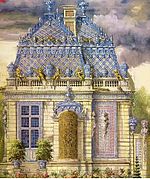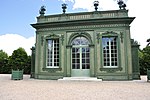La Lanterne, Versailles
La Lanterne is a hunting lodge in Versailles, France. Along with the Fort de Brégançon in Var, it is one of the two official retreats of the President of the French Republic. The estate is adjacent to the Park of Versailles and situated on the road that links Versailles with Saint-Cyr-l'École. The estate includes a central two-story U-shaped building with a central section measuring 20 by 6 metres (66 by 20 ft). The central section is flanked by two parallel wings—of a later date and lower than the central section—which frame a gravel courtyard. A tree-lined lane links the courtyard with the Saint-Cyr road. The estate also includes a swimming pool, a tennis court, and five guest rooms.
Excerpt from the Wikipedia article La Lanterne, Versailles (License: CC BY-SA 3.0, Authors).La Lanterne, Versailles
Allée de la Tuilerie, Versailles
Geographical coordinates (GPS) Address Nearby Places Show on map
Geographical coordinates (GPS)
| Latitude | Longitude |
|---|---|
| N 48.804055555556 ° | E 2.0922222222222 ° |
Address
Allée de la Tuilerie
78000 Versailles, Notre-Dame
Ile-de-France, France
Open on Google Maps










